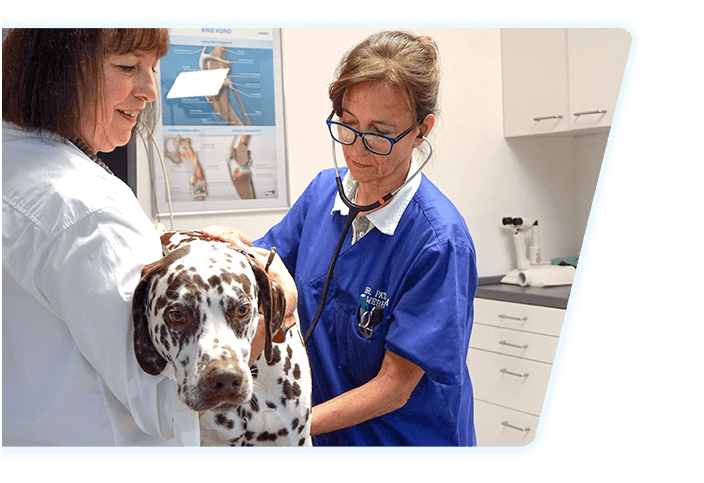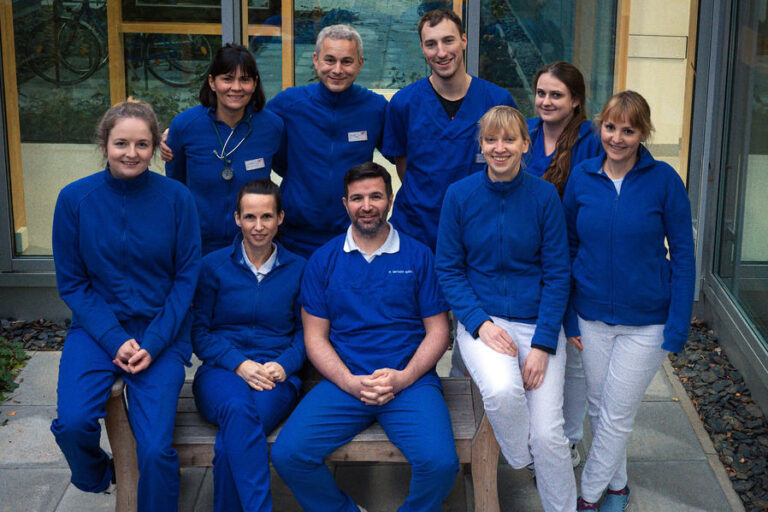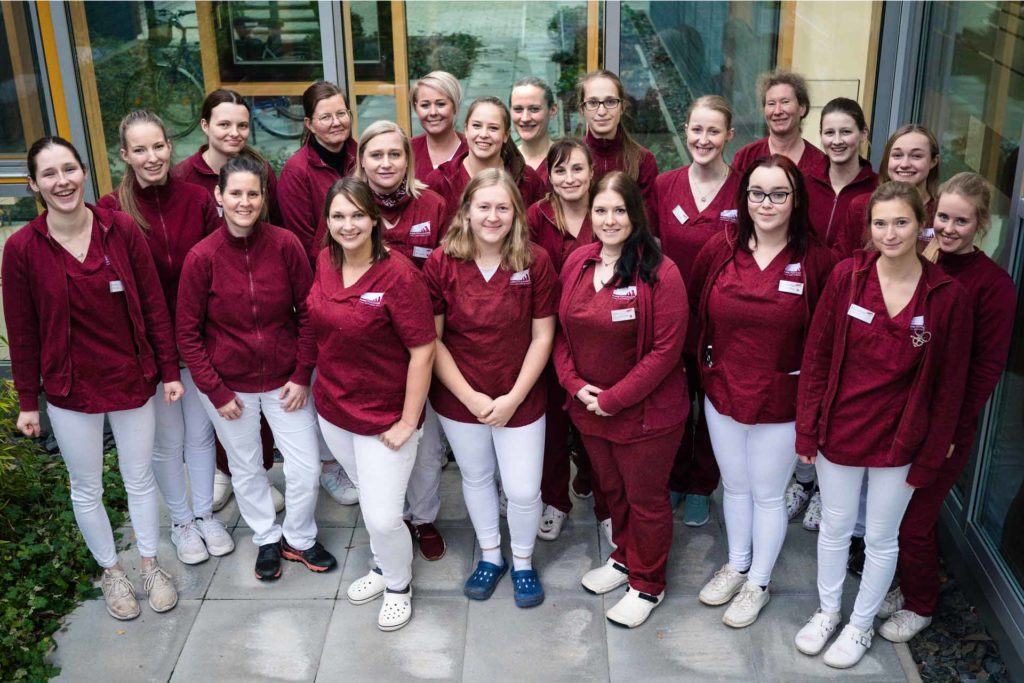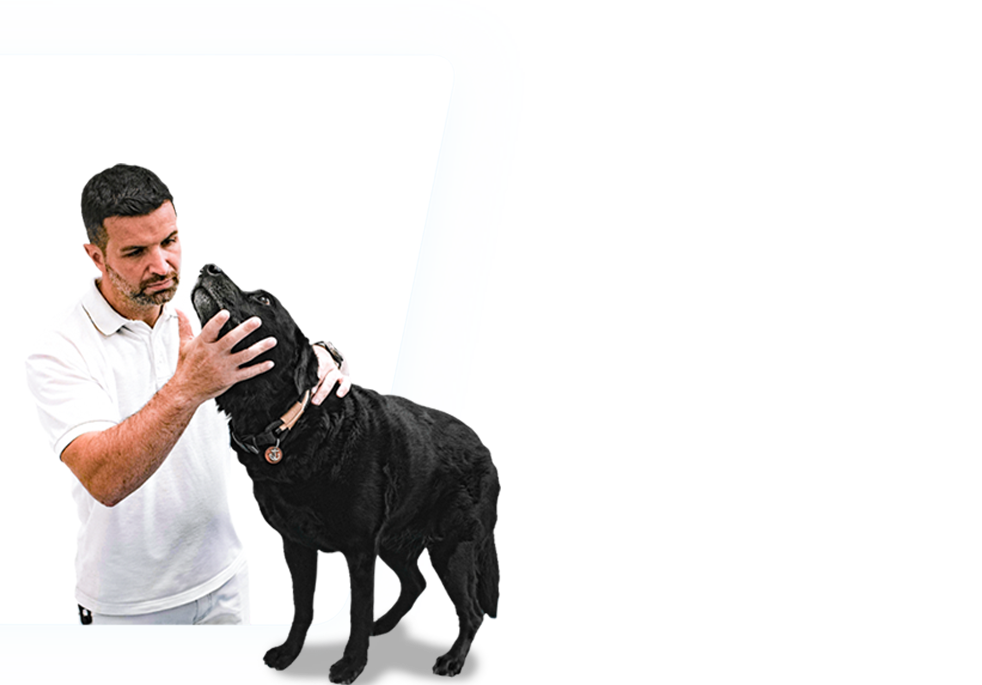In unserer Klinik für Kleintiere nehmen wir uns Zeit für Sie und Ihr Tier!
In familiärer Atmosphäre gewährleistet die moderne medizintechnische Klinikausstattung für umfangreiche Diagnostik- und Therapiemöglichkeiten die optimale Versorgung Ihres Tieres.
Tag und Nacht ist unser kompetentes Tierärzte-Team mit viel Erfahrung und neuestem Wissensstand für Ihr Tier im Einsatz – durch vielfältige Spezialisierung decken wir alle Bereiche der Kleintiermedizin ab. Wir haben stets ein offenes Ohr für Ihre Fragen und stehen verschiedenen Therapieoptionen aufgeschlossen gegenüber.

Neben den grundsätzlichen tiermedizinischen Leistungen wie Impfungen und allgemeine Gesundheits-, Alters- und Reisechecks bieten wir Ihnen zahlreiche spezielle Leistungen an. Dazu gehören Diagnostik und Therapie, Chirurgie, Augen- und Zahnheilkunde, Kardiologie Gynäkologie, Dermatologie und Physiotherapie.

80er
Die Wurzeln der „Klinik für Kleintiere Sottrum“ liegen bereits Anfang der 80er Jahre in der Alten Dorfstraße 45, ehemals „Klinik für Pferde und Kleintiere“ in Sottrum.
90er
Dr. Patricia Werhahn etablierte immer mehr den Kleintierbereich und bezog eigene Räumlichkeiten auf dem Klinikgelände. Es gab eine kleine Station, ein Behandlungszimmer sowie einen OP.
2001
Nachdem der Kleintierbereich fast 20 Jahren in der Gemeinschaftsklinik geführt wurde, entschloss sich Dr. Patricia Werhahn, durch die steigenden Patientenzahlen, zu einem Neubau und gleichzeitig der Gründung einer eigenständigen „Klinik für Kleintiere“. Die Adresse blieb dabei fast gleich, nur die Hausnummer änderte sich zur 83. Insgesamt bestand das Team aus 7 Personen, davon 3 Tierärztinnen.
2008
Technische Neuerung durch ein neues Ultraschallgerät, das mit einem Farbdoppler ausgestattet war. Mit diesem Gerät war die Echokardiographie sowie die die Abdomensonographie möglich.
2010
2010 Umstellung vom analogen zum digitalen Röntgen.
2013
Anschaffung eines flexiblen Video-Endoskops für eine weitreichende Diagnostik (Gastro-Koloskopie, Rhinoskopie, Otoskopie, Bronchoskopie).
2016
Auch am neuen Standort bekam die Klinik sehr viel Zulauf und vergrößerte sich stetig. Die Mitarbeiteranzahl hat sich in gut 10 Jahren verdreifacht. Mit entsprechenden internen Umbaumaßnahmen konnten die Räumlichkeiten für die Kliniknutzung noch erweitert werden.
2020
Generationswechsel in der Klinik für Kleintiere Sottrum. Dr. Patricia Werhahn hat die Leitung der Klinik an ihre beiden Töchter und ihren Schwiegersohn übergeben. Dr. Franziska Werhahn Beining ist ebenfalls Tierärztin, genau wie ihr Mann Marco Werhahn Beining auch. Gemeinsam übernehmen die beiden die tiermedizinische Leitung unterstützt durch Henrike Werhahn in der kaufmännischen Leitung.
2021
Fertigstellung des Anbaus sowie der „Renovierung“ des Bestandsgebäudes. Im Bestandgebäude wurde der Empfangsbereich komplett neugestaltet, es sind 5 Behandlungszimmer entstanden, ein Labor und ein Raum für die Physiotherapie. Der Anbau beherbergt 3 OP-Plätze, die OP-Vorbereitung, Röntgen- und CT, Zahn-OP und die Station für Hunde, Katzen und Heimtiere.
2023
Die neuen räumlichen Möglichkeiten haben sich bewährt und sind tagtäglich (24/7) in vollem Einsatz. Auch das Team ist in den letzten 3 Jahren nochmal stark gewachsen, so dass wir inzwischen knapp über 50 Mitarbeiter:innen in unserem Team haben.

Hohe fachliche Kompetenz und Spezialisierung in verschiedenen Fachrichtungen zeichnen unsere Tierärzte aus.

Unser tierliebes und qualifiziertes Fachpersonal kümmert sich besonders fürsorglich um unsere tierischen Patienten.

Das unverzichtbare Team, welches hinter den Kulissen agiert. Wir sorgen dafür, dass hier alles wie am Schnürchen läuft!
Der liebevolle und respektvolle Umgang mit Ihrem Tier ist uns neben intensiver Diagnostik, bestmöglicher medizinischer Versorgung und ausführlicher individueller Beratung besonders wichtig.

Wir suchen regelmäßig tatkräftige Verstärkung für unser Team. Bewerben Sie sich jetzt bei uns und tragen Sie zum Tierwohl bei!
Ihre Klinik für Kleintiere | Sottrum
Wir sind überzeugt davon, dass das Internet allen Menschen zugänglich sein sollte – unabhängig von ihren Lebensumständen oder Fähigkeiten. Deshalb verpflichten wir uns, unsere Website möglichst barrierefrei für ein möglichst breites Publikum bereitzustellen.
Um dies zu erreichen, orientieren wir uns so weit wie möglich an den Web Content Accessibility Guidelines 2.1 (WCAG 2.1) auf Konformitätsstufe AA des World Wide Web Consortiums (W3C). Diese Richtlinien beschreiben, wie Inhalte im Internet für Menschen mit unterschiedlichen Einschränkungen zugänglich gemacht werden können. Die Einhaltung dieser Richtlinien trägt dazu bei, dass unsere Website für alle Menschen zugänglich ist – etwa für blinde Menschen, Menschen mit motorischen Einschränkungen, Sehbehinderungen, kognitiven Einschränkungen und viele weitere.
Diese Website verwendet verschiedene Technologien, um jederzeit ein möglichst barrierefreies Nutzungserlebnis zu ermöglichen. Wir setzen ein spezielles Barrierefreiheits-Interface ein, das es Nutzer:innen mit bestimmten Einschränkungen erlaubt, das Erscheinungsbild der Website an ihre persönlichen Bedürfnisse anzupassen.
Zusätzlich verwendet die Website eine KI-basierte Anwendung, die im Hintergrund läuft und kontinuierlich das Barrierefreiheitsniveau der Seite verbessert. Diese Anwendung optimiert den HTML-Code der Website, passt ihre Funktionen für Bildschirmleseprogramme (Screenreader) an und unterstützt die Tastaturbedienung für Menschen mit motorischen Einschränkungen.
Wenn Sie eine Störung bemerken oder Vorschläge zur Verbesserung haben, freuen wir uns über Ihre Rückmeldung. Sie erreichen uns unter folgender E-Mail-Adresse:
Unsere Website nutzt ARIA-Attribute (Accessible Rich Internet Applications) sowie verschiedene technische Anpassungen, um Menschen mit Sehbehinderungen, die Screenreader verwenden, das bestmögliche Nutzungserlebnis zu bieten. Sobald ein:e Nutzer:in mit Screenreader die Website aufruft, erscheint ein Hinweis zur Aktivierung des Screenreader-Profils.
Optimierung für Screenreader: Im Hintergrund läuft ein automatischer Prozess, der die Website umfassend analysiert, um dauerhaft Barrierefreiheit auch bei Aktualisierungen sicherzustellen. Dabei wird der Screenreader mit relevanten Informationen versorgt – etwa durch korrekte Beschriftungen von Formularfeldern, erklärende Texte für Icons (z. B. Social Media, Suche, Warenkorb), Hinweise bei Eingabefehlern sowie semantisch korrekte Rollen für Elemente wie Buttons, Menüs und Dialogfenster. Zudem wird der gesamte Bildinhalt durch ein intelligentes Bildanalyse-System erfasst und mit passenden Alternativtexten (ALT-Tags) versehen, inklusive OCR (Texterkennung). Um die Screenreader-Anpassung jederzeit zu aktivieren, genügt die Tastenkombination Alt+1. Nutzer:innen erhalten auch automatisch den Hinweis, den Screenreader-Modus zu aktivieren, sobald sie die Website aufrufen.
Diese Anpassungen sind mit allen gängigen Screenreadern kompatibel, darunter JAWS und NVDA.
Optimierung der Tastaturnavigation: Der Hintergrundprozess passt den HTML-Code der Website an und ergänzt Verhalten über JavaScript, sodass die gesamte Seite über die Tastatur bedienbar wird. Dazu gehören Navigation mit Tab/Shift+Tab, die Steuerung von Dropdowns über Pfeiltasten, das Schließen über Esc, das Auslösen von Buttons und Links über Enter sowie die Auswahl von Kontrollkästchen und Optionsfeldern über Leertaste oder Enter. Zusätzlich sind Schnellnavigationen und Sprunglinks über Alt+1 oder am Seitenanfang verfügbar. Auch Fokusverschiebung bei Popups wird automatisch umgesetzt, sodass der Fokus nicht außerhalb des Dialogfeldes wandern kann.
Nutzer:innen können außerdem Tastenkürzel wie „M“ (Menüs), „H“ (Überschriften), „F“ (Formulare), „B“ (Buttons) und „G“ (Grafiken) verwenden, um gezielt zu bestimmten Seitenelementen zu springen.
Wir bemühen uns, mit möglichst vielen Endgeräten, Browsern und Assistenzsystemen kompatibel zu sein. Aktuell unterstützen wir über 95 % der marktüblichen Systeme, darunter Google Chrome, Mozilla Firefox, Apple Safari, Opera, Microsoft Edge sowie die Screenreader JAWS und NVDA.
Trotz aller Bemühungen kann es vorkommen, dass einzelne Seitenbereiche noch nicht vollständig barrierefrei sind oder sich derzeit in der Anpassung befinden. Wir arbeiten stetig daran, die Barrierefreiheit zu verbessern und neue Technologien einzubinden. Für Hinweise, Anregungen oder Hilfe schreiben Sie bitte an: